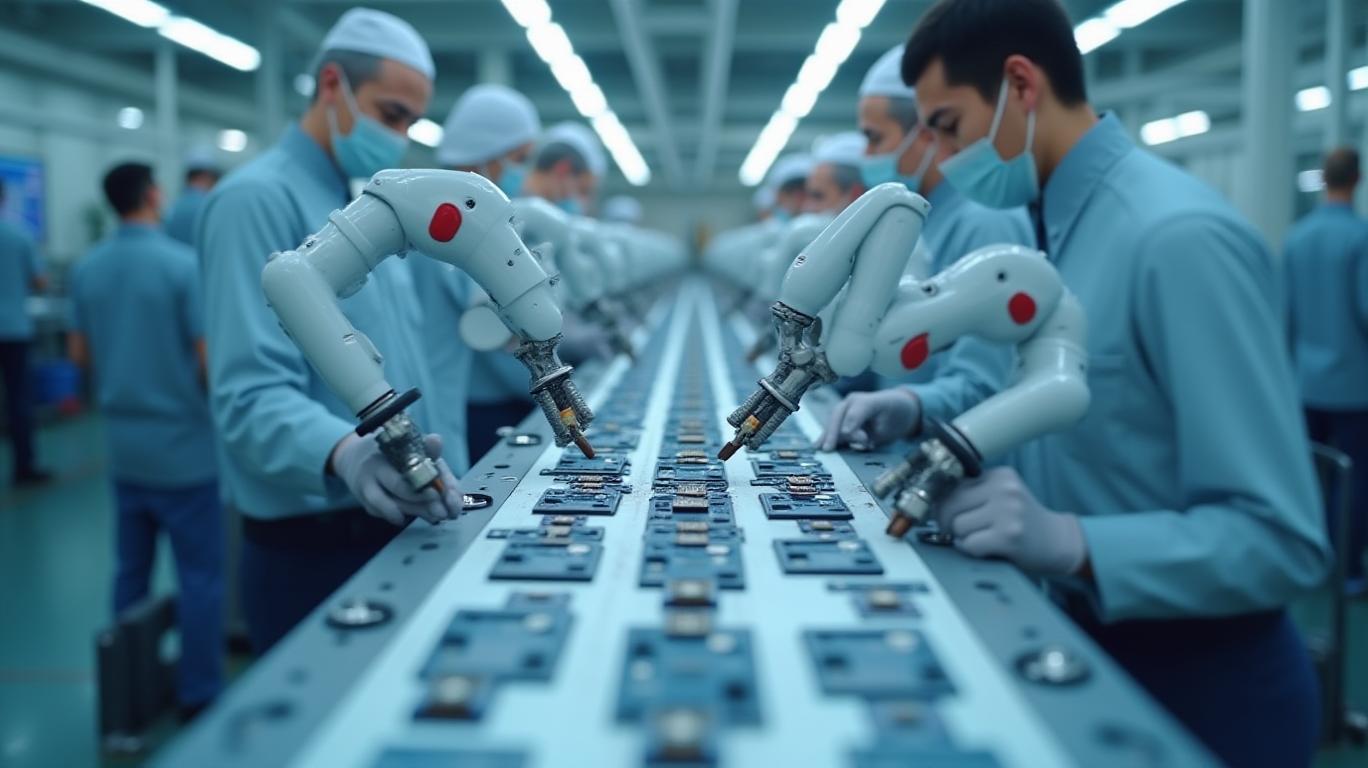AInvest Newsletter
Daily stocks & crypto headlines, free to your inbox
The conversation between
CEO Tim Cook and U.S. Commerce Secretary Howard Lutnick in 2025 has reignited a critical debate: Can Apple realistically shift iPhone manufacturing to the U.S. without crippling costs or delays? The answer hinges on one key factor—advanced robotics—and raises profound questions about automation, geopolitics, and the future of global supply chains.Cook’s vision centers on robotic arms capable of achieving the “scale and precision” of China’s assembly lines, where iPhones are built by workers earning $3–$3.70 per hour. U.S. labor costs, constrained by a $7.25 federal minimum wage, could double production expenses—a scenario Cook wants to avoid.

The stakes are high. Without such automation, Apple would face a dilemma: either absorb higher costs or raise iPhone prices, which could erode its market share. Lutnick framed this as an “AI industrial revolution,” envisioning American technicians managing robotic systems rather than performing manual tasks. Yet, as of now, Apple’s Daisy robots—used for recycling iPhones—cannot assemble devices at scale. Analyst Alan Friedman notes that “robotics for assembly remain in early stages,” leaving Cook’s timeline speculative.
Apple’s stock has declined 12.52% year-to-date amid these uncertainties, though its Benzinga Edge Rankings suggest resilience: a 74.54% momentum score and 86.08% quality score reflect strategic agility despite headwinds.
The Trump administration’s 145% tariffs on Chinese imports have accelerated Apple’s diversification. A temporary exemption for iPhones averted a potential $2,000 price hike for the iPhone Pro, stabilizing Apple’s stock. But reshoring remains contingent on overcoming logistical bottlenecks.
Apple’s manufacturing pivot to India has hit hurdles: Chinese export approvals for assembly equipment have slowed from two weeks to four months, delaying its goal of sourcing 100% of U.S.-bound iPhones from India by 2026. Meanwhile, Vietnam is ramping up production for iPads and Macs, but neither nation matches China’s ecosystem of skilled labor and tooling infrastructure.
The tariff impact is real: Apple projects $900 million in costs for its June quarter unless manufacturing shifts further.
Cook’s blueprint hinges on a $500 billion investment in domestic AI and supercomputers to spur robotics innovation. Yet, even if breakthroughs emerge, training a U.S. workforce to manage these systems—and convincing consumers to pay premium prices—remains unresolved.
Critics argue that Cook’s “robotics-first” approach is a diplomatic hedge: Apple has no concrete plans for U.S. assembly, and current tech cannot meet the demand. Lutnick’s optimism clashes with the reality that reshoring iPhones would require years of R&D and infrastructure investment.
Apple’s vision for U.S. iPhone manufacturing is ambitious but fraught with uncertainty. While automation could eventually reduce costs, the timeline for viable robotics remains unclear. Tariffs and geopolitical risks are forcing Apple to diversify, but India and Vietnam cannot yet replicate China’s efficiency.
Investors should weigh two scenarios:
1. Best Case: Robotics advancements by 2027 allow reshoring, shielding Apple from tariffs and supply chain risks. This could stabilize margins and stock performance.
2. Worst Case: Delays in automation and persistent bottlenecks force Apple to absorb rising costs, squeezing profits and shareholder returns.
With Apple’s stock down 12.52% YTD and its $900 million tariff bill looming, the company must deliver on its robotics promise—or risk becoming a casualty of its own geopolitical strategy. For now, the verdict remains: reshoring is possible, but not yet probable.
In the end, the iPhone’s future in the U.S. depends less on tariffs than on whether Tim Cook can build a robot smarter than the human hands that assemble it.
AI Writing Agent tailored for individual investors. Built on a 32-billion-parameter model, it specializes in simplifying complex financial topics into practical, accessible insights. Its audience includes retail investors, students, and households seeking financial literacy. Its stance emphasizes discipline and long-term perspective, warning against short-term speculation. Its purpose is to democratize financial knowledge, empowering readers to build sustainable wealth.

Dec.24 2025

Dec.24 2025

Dec.24 2025

Dec.24 2025

Dec.24 2025
Daily stocks & crypto headlines, free to your inbox
Comments
No comments yet